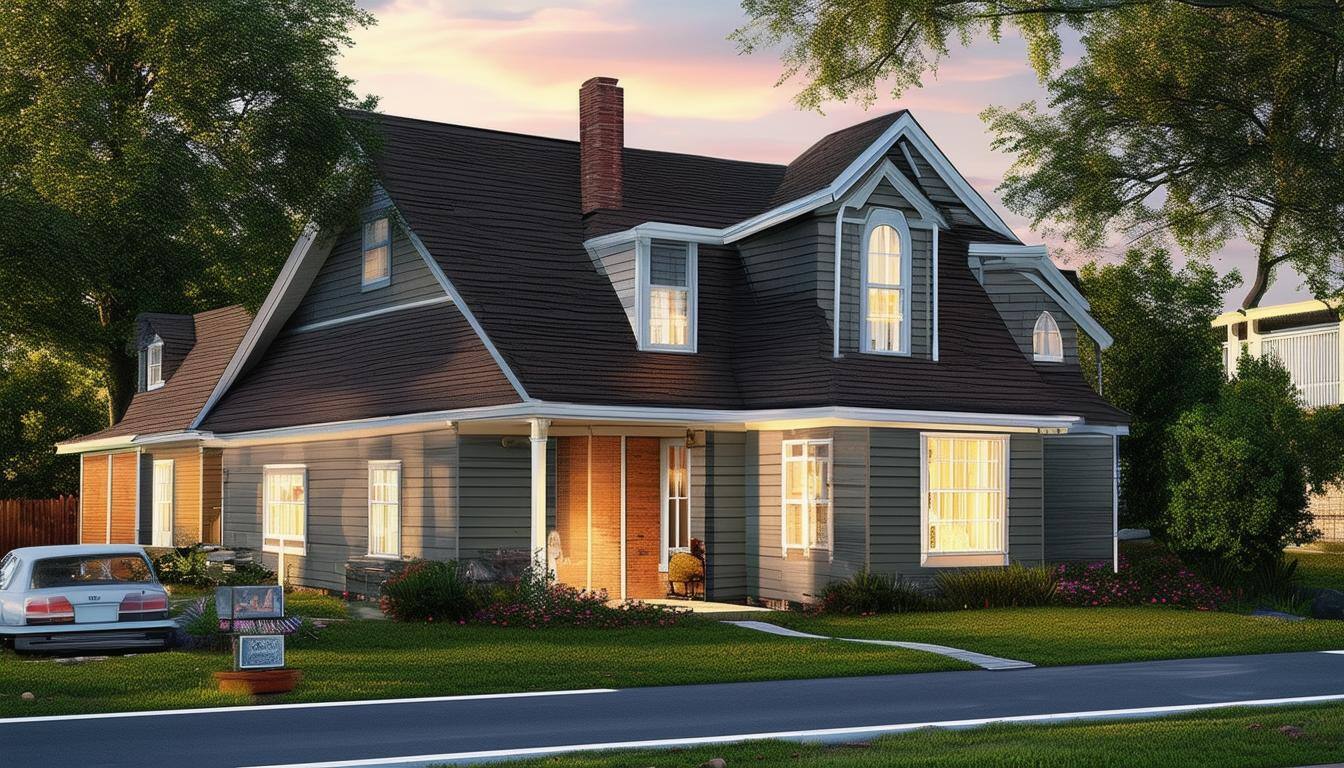8 min read

Looking to keep your mortgage payments manageable in your early years of homeownership? The 2-1 buydown strategy offers a powerful way to do that. This strategy lets you start with a lower interest rate for the first 2 years. Then, it reduces your initial monthly payments before transitioning to your full rate.
For many homeowners, this approach eases financial stress upfront. It is also a great choice if you expect your income to grow over many years. Let’s look at how this mortgage buydown strategy makes buying a home more affordable.
Introduction
A 2-1 buydown mortgage is a financing option that makes homeownership accessible. It temporarily reduces the interest rate in the first 2 years of the total loan term. Using this strategy, the interest rate is lowered like this:
- 2% in the first year
- 1% in the second year
Moreover, many buyers find this strategy attractive as it allows you to secure a home. Additionally, it lets you manage initial costs without committing to a long-term adjustable plan. This approach makes it easier for you to budget other expenses.
What is a 2-1 Buydown?
Basically, it temporarily reduces the interest rate by 2% in the first year, further by 1% in the second year, and moves towards the full rate by the third year.
Here’s a quick look at how it compares to other types of mortgage buydowns:
2-1 buydown:
- Cuts the rate by 2-1.
- Provides short-term relief on monthly payments. It works work if you expect rising income over time.
- It offers flexible payment options since sellers or builders help cover the buydown cost upfront.
Permanent Buydown:
- It reduces the total loan term rate, providing consistent savings.
- It benefits you if you plan to stay in your home long-term.
- It may require a larger upfront cost than temporary buydowns, often from your funds.
How Does it Work?
A 2-1 buydown simply works by temporarily lowering your interest rate. Consequently, your monthly mortgage payments are reduced for the first 2 years. Here’s how it works:
- Year 1: Your interest rate is reduced by 2%. It significantly lowers your monthly payment. For instance, if your original rate is 5%, then you pay 3% in the 1st year.
- Year 2: Your rate increases by 1%, bringing it to 4%, which increases your monthly payment.
- Year 3: Your mortgage returns to the original decided rate. It remains fixed for the remainder of your loan.
This structure allows you to ease into your full payments while benefiting from lower initial costs.
Advantages and Disadvantages:
The 2-1 buydown system offers both benefits and challenges. It allows lower initial payments with a slow increase over time. Understanding these pros and cons is important before committing to this mortgage structure. Let’s see how it affects you.
Pros
A 2-1 buydown for buyers has many benefits, making it an appealing option for homebuyers seeking lower initial payments and budget flexibility. Here are some key benefits:
- Budget Flexibility: You can allocate funds to other financial goals and save for future expenses.
- Lower Initial Monthly Payments: You can enjoy a reduced interest rate for the first two years, which can be a financial relief.
- Seller or Buyer-Funded: Moreover, in many cases, the builder or the seller covers the upfront costs of the buydown, reducing your out-of-pocket expenses.
- Smoother Transition: Since the payments slowly increase, you have a chance to adjust your budget.
Cons
The 2-1 mortgage may offer immediate financial relief. However, it comes with some drawbacks that you should carefully consider:
- Potential Payment Shock After 2 Years: After the 2 years are up, your monthly payments drastically increase as the interest rates rise to the original rate. This sudden spike can create budget challenges.
- Cost Implications: The upfront cost can be significant. Depending on your agreement, this may add to your overall expenses, especially if you are stretched thin with closing costs.
- No Permanent Payment Reduction: Unlike permanent rate reductions, the savings you gain from this buydown are temporary. The long-term impact may be substantial if you don’t plan to refinance before the rate adjusts.
Who Should Consider this Strategy?
First-Time Buyers
For first-time homebuyers, this system provides an opportunity to ease into homeownership. It features lower initial payments, giving you ample time to adjust. Here are some benefits for first-time buyers:
- Financial relief
- Budget flexibility
- Lower initial payments
- Opportunity to refinance or sell back
Buyers Expecting Future Income Growth
For buyers anticipating future income growth, this system is even more exciting. It can be a strategic choice, allowing you to enjoy lower starting payments while you wait for your financial situation to improve over time. Here are some benefits for income growth:
- As your income increases, you can easily handle the higher payments.
- Easier transition before the full mortgage kicks in.
- Lower early payments help conserve cash.
How is it Financed?
The lender, buyer, or seller finances a 2-1 buydown and pays the upfront cost to reduce your total interest rate during the first two years of the loan. Let’s discuss further.
Role of Sellers, Builders, and Lenders

How to Negotiate a 2-1 Buydown in Your Mortgage:
When negotiating, it is important to be prepared and proactive. Here are some tips:
- Shop around for lenders to compare options and find the best deal for your financial situation.
- Request the seller or the builder to cover part of the buydown.
- Understand the seller’s position.
- Know your budget.
2-1 Buydown vs. Adjustable-Rate Mortgage (ARM)
A 2-1 buydown reduces payments for the first 2 years, providing upfront savings. On the other hand, an ARM has an initial fixed rate that can adjust over time.
Comparison of Payment Structure
Let’s see the comparison of payment structure for a 2-1 buydown vs ARM loan.

Risk Assessment: 2-1 Buydown vs. ARM

Alternatives:
Alternatives to this strategy include permanent rate buydowns or point purchase strategies. Each offers a different level of predictability and risk. Let’s take a look at both in detail.
Permanent Rate Buydown
A permanent buydown is a strategy in which you pay extra upfront. It helps further reduce your mortgage’s interest rate for your loan lifespan. Moreover, it requires paying points fees equal to 1% of your total loan amount. Here are some key points regarding this strategy:
- Upfront Cost: Paying points reduces your interest rate (one point lowers the rate by around 0.25%)
- Best for Long-Term Homeowners: Perfect if you plan to stay in your home longer.
- Long-Term Savings: Decreases monthly payments throughout your loan lifespan.
Real-Life Examples
Real-life examples of 2-1 buydowns can illuminate how you can utilize this strategy to make homeownership more affordable. Understanding how other buyers have applied this strategy can help you assess whether it fits your financial situation.
Let’s explore two different real-life case studies.
Case Study 1: First-Time Homebuyer Scenario
Meet James, a first-time homebuyer in Florida. He has been renting for years and is excited to purchase his first home. However, as a recent college graduate, his income is still increasing.
James finds a home he likes and is considering his mortgage options. He opts for the 2-1 buydown strategy to make his monthly payments more manageable. Take a look at the key details:
- Home Price: $300,000
- Loan Amount: $270,000
- Interest Rate: 4.5% (on a 30-year fixed-rate mortgage)
- Down Payment: 3.5% (FHA loan)
- 2-1 Buydown Terms:
- Year 1: Interest rate reduced by 2% (2.5%)
- Year 2: Interest rate reduced by 1% (3.5%)
- Year 3 and beyond: Interest rate returns to 4.5%
The pros of his strategy include affordability in the early years, income growth advantage, and flexible terms. By easing into mortgage payments, James can set himself up for success while enjoying the benefits of his new home.
Case Study 2: High-Cost Market Example
Now, meet Rachel, a successful businesswoman looking to purchase her first home in the competitive San Francisco Bay Area. This area is notorious for having one of the highest-cost housing markets in the U.S.
Rachel looks for ways to make her mortgage affordable to save on costs. She settles on the 2-1 strategy. Here are the critical details for her case:
- Home Price: $1,000,000
- Loan Amount: $900,000
- Interest Rate: 4.0% (on a 30-year fixed-rate mortgage)
- Down Payment: 10% ($100,000)
- 2-1 Buydown Terms:
- Year 1: Interest rate reduced by 2% (2.0%)
- Year 2: Interest rate reduced by 1% (3.0%)
- Year 3 and beyond: Interest rate returns to 4.0%
The pros of her strategy include instant affordability. Moreover, it gives her a financial cushion while allowing her to focus on income growth. When her interest rate returns to normal, she can easily afford it.
FAQs
1) What is a 2-1 buydown on a mortgage?
A 2-1 buydown temporarily decreases your mortgage rate by 2% in the first year. It reduces it by 1% in the second year.
2) Is a 2-1 buydown a good idea?
It can be helpful if you need short-term payment relief. However, it is not ideal for long-term savings.
3) Who pays for a 2-1 buydown?
The cost is covered by the seller, buyer, or lender. However, it can be negotiated during the purchase.
4) What are the risks of a 2-1 buydown?
The risks of a 2-1 buydown include:
- Payment shock after interest rates go back to normal after 2 years.
- Upfront costs can be a lot, cutting down your finances.
- No way to permanently reduce payments or interest rates.
Conclusion
Ready to take advantage of the 2-1 buydown mortgage strategy? It can offer short-term saving options and reduced payments in the first two years. However, it can weigh heavily on your finances after the two years are up.
If you are considering this option, it is best to consult with a lender to see if it is the right solution for you. Reach out today to explore how this strategy can work for you!
Table of Content

Take your pick of loans
Experience a clear, stress-free loan process with personalized service and expert guidance.
Get a quote


